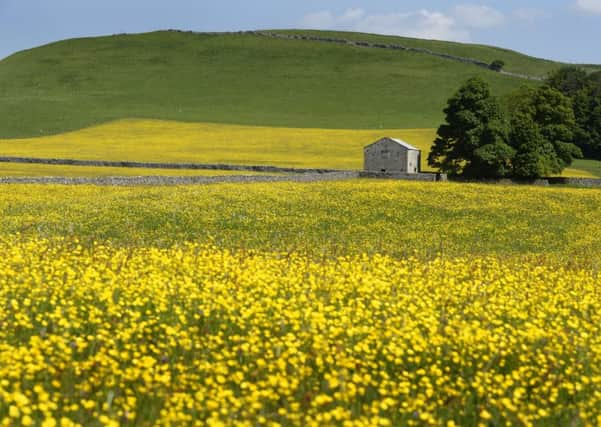Sunshine flowers growing near ancient coral reef


Buttercups, otherwise known by their scientific name Ranunculus, are part of a large genus of about 600 species of plants. Members of the genus also include spearworts and water crowfoots.
Ranunculus is Late Latin for “little frog”, the flowers probably being so named because they are frequently found growing near water. Buttercups are poisonous to cattle and cause swelling and blistering if eaten. However, they are usually safe to eat if bound up with hay as once cut, their toxins dissipate.
Advertisement
Hide AdAdvertisement
Hide AdThe old myth that holding a buttercup under one’s chin indicates a fondness (or not) for butter was investigated by a team of scientists in 2011. They didn’t find any evidence that a glowing buttercup predicted a fondness for dairy products, however, they did find out why buttercups glow so brightly - their petals have two layers of reflective cells, with an air gap between, effectively doubling the amount of light they can reflect. Additionally, they are also very good at reflecting ultra-violet light, which might explain why they are so adept at attracting insects and so appealing to the eye in general.
The parish of Cracoe lies in the Craven district of North Yorkshire, not far from Rylstone and about six miles south-west of Grassington and also near Skipton. Incidentally, Cracoe was also home to some of the original Calendar Girls, members of the Women’s Institute who bared all to raise money for charity and whose story has been told in film and on stage.
The village has a population of only about 160 residents (178 according to the 2011 Census).
It lies beneath Barden Fell and the twin skyline landmarks of Rylstone Cross and Cracoe Pinnacle. It is surrounded by interesting geology, not least of which are the nearby Cracoe Reef Knolls, a series of limestone hills which are geological remnants of an ancient coral reef.
Technical Details: Nikon D4 camera, 80-200mm Nikkor lens, 1/640th sec @ f9, ISO200.